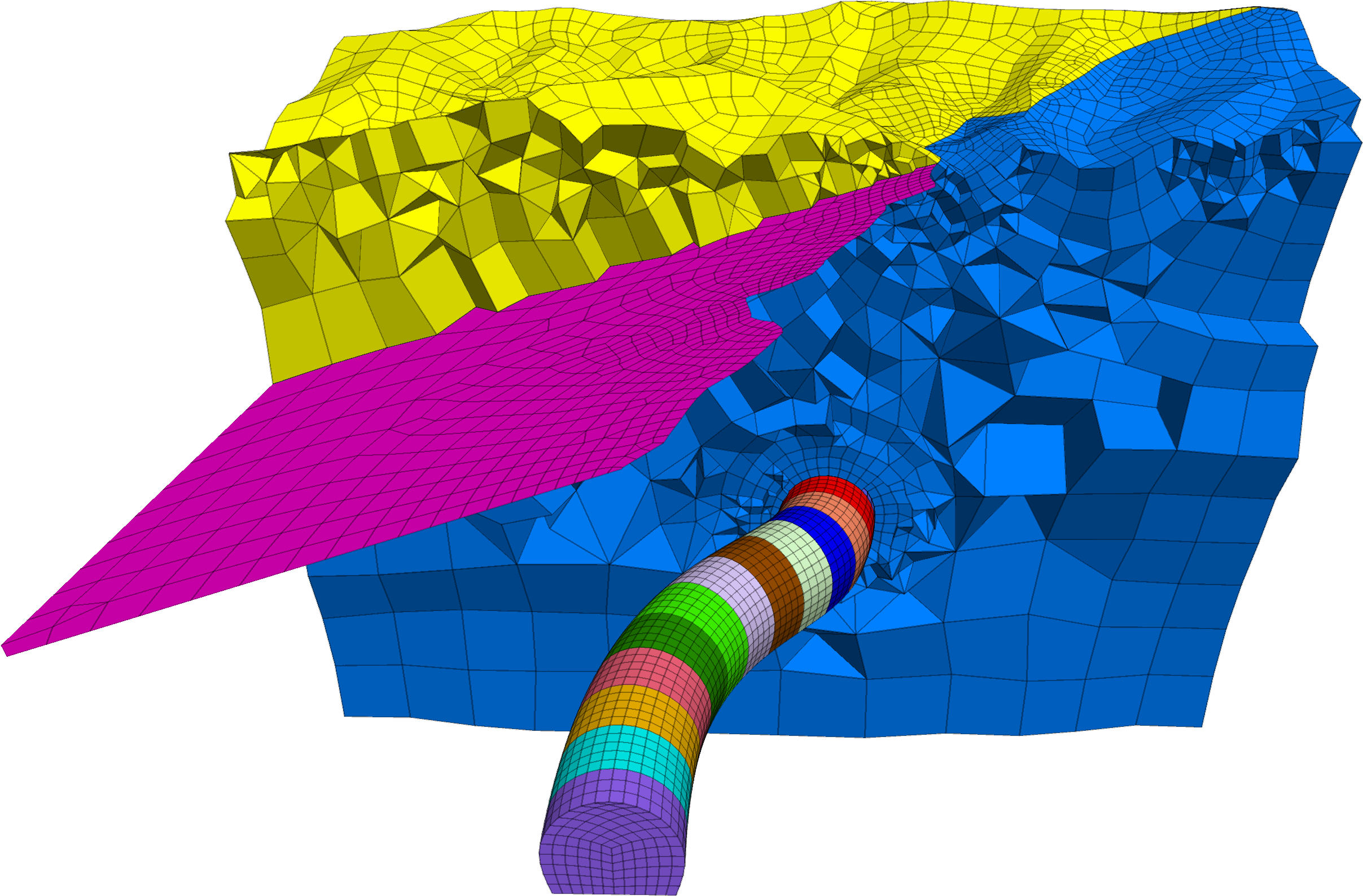GVol is Griddle’s unstructured volume mesher, capable of creating a tetrahedral or a hex-dominant mesh using selected surface meshes as boundaries. Surface meshes can be composed of triangles, a mix of quadrilaterals and triangles, or only quadrilaterals and must be conformal. Tetrahedral unstructured volume meshes can be generated from any combination of surface meshes while hex-dominant volume meshes can be produced from quad-dominant and/or all-quad surface meshes.
Surface meshes can also separate discrete volumes (e.g., tunnels, stopes, geotechnical units) within the larger volume. Besides, surface meshes can “float” inside the volume of interest or be partially connected to other surface meshes, which is useful for modeling joints and faults. All input surface faces will be present as faces of elements in the resulting volume mesh*.

GVol mesher settings include: the type of the output mesh (tet or hex-dominant), target element size (away from the boundaries), gradation (from the boundaries to the target element size), level of meshing optimization, and shape quality (trade-off between element shape quality and element size and type).
Volume meshes may be exported to any of the following formats:
- FLAC3D Text (ASCII) or Binary
- 3DEC 5.2 Text (ASCII) format and only rigid blocks type
- 3DEC 7.0
- Text (ASCII) or Binary
- Rigid or deformable blocks format
- ABAQUS
- ANSYS
- NASTRAN
- CSV
GVol mesher settings include: the type of the output mesh (tet or hex-dominant), target element size (away from the boundaries), gradation (from the boundaries to the target element size), level of meshing optimization, and shape quality (trade-off between element shape quality and element size and type).
Volume meshes may be exported to any of the following formats:
- FLAC3D Text (ASCII) or Binary
- 3DEC 5.2 Text (ASCII) format and only rigid blocks type
- 3DEC 7.0
- Text (ASCII) or Binary
- Rigid or deformable blocks format
- ABAQUS
- ANSYS
- NASTRAN
- LS-DYNA
- VRML
- CSV
New in GVol
- The volume mesher engine is faster and more robust.
- Automatic checks for surface mesh problems before meshing.
- More meshing controls:
- element target size,
- size gradation,
- element shape quality, and
- optimization level.
- New output formats:
- 3DEC 7.0
- Text (ASCII) or Binary output
- Rigid or Deformable blocks format
- FLAC3D binary file, which is significantly faster than ASCII output
- CSV file
- 3DEC 7.0
*3DEC deformable blocks format represents a special case as joints cannot be created along floating surface meshes located (fully or partially) within watertight volumes. Such floating surfaces do not split or define separate blocks; as such, they currently cannot be represented as joints in 3DEC (though, they can be represented as interfaces in FLAC3D). See GExtend for an approach to handle this case for 3DEC.
